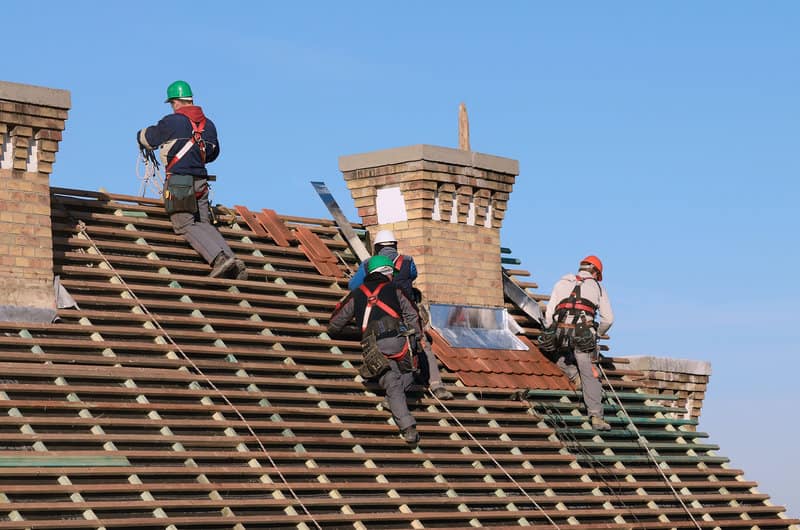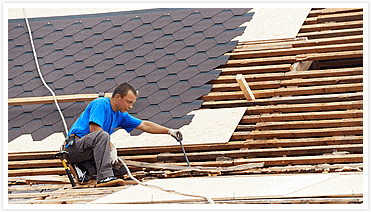A Comprehensive Guide to Effective Roofing Flat Roof Installation
The details of flat roof covering setup demand a precise method, beginning with a detailed understanding of various flat roofing kinds and the crucial materials needed for optimal efficiency. A successful installment hinges not just on the choice of products but likewise on the prep work and execution of each action involved in the procedure.
Understanding Flat Roof Covering Types
When thinking about level roofs, it is necessary to recognize the various types offered, as each deals distinctive advantages and drawbacks tailored to certain demands. One of the most common sorts of flat roofing systems consist of Built-Up Roof covering (BUR), Changed Asphalt, and Single-Ply membrane layers.
Built-Up Roofing contains multiple layers of asphalt and gravel, offering outstanding longevity and climate resistance. It is particularly advantageous in areas prone to severe weather condition conditions however may require more maintenance because of its complex building.
Customized Asphalt is a prominent option for its ease of installation and adaptability. It frequently employs a self-adhesive or torch-applied approach, which can be helpful for fast fixings and long-lasting performance. However, its life-span can be much shorter compared to BUR.
Single-Ply membrane layers, including Thermoplastic Olefin (TPO) and Ethylene Propylene Diene Monomer (EPDM), are recognized for their light-weight nature and power effectiveness. These materials are often favored for industrial buildings due to their cost-effectiveness and convenience of setup (Cleveland Roofing Specialists). Nonetheless, they might not supply the exact same level of insulation as various other choices.
Each roof covering type requires cautious consideration based upon climate, budget, and specific project demands.
Important Products for Flat Roof Covering
A range of essential products are essential for the effective installation of level roofing systems. The selection of materials straight impacts longevity, performance, and general efficiency.
Among the main materials is the roof covering membrane layer, which can be constructed from various materials such as polycarbonate polyolefin (TPO), ethylene propylene diene monomer (EPDM), or PVC. Each type uses unique advantages, consisting of UV resistance and flexibility, which are crucial for prolonged performance.
Along with the membrane layer, insulation materials play a considerable role in energy effectiveness. Inflexible foam boards or polyisocyanurate insulation are popular options, as they give outstanding thermal resistance and moisture administration.
Furthermore, roofing adhesives and sealers are essential for making sure a water tight installation. These products should be suitable with the picked membrane layer to stop degeneration with time.
Planning For Installation
Proper preparation is necessary for an effective level roof covering installation, as it lays the groundwork for a efficient and resilient roof covering system. Begin find out here now by conducting an extensive examination of the existing roof covering framework.
Next, collect all required tools and materials, guaranteeing that they satisfy market criteria. This consists of water resistant membranes, insulation, blinking, and bolts. Familiarize yourself with the producer's requirements, as adherence to these guidelines is essential for service warranty objectives.
Consider weather problems; avoid setup throughout hefty rainfall or extreme temperatures, which can impact product efficiency. By taking these preparatory steps, you can improve the probability of an effective level roofing system installation that meets both architectural and visual demands.
Step-by-Step Setup Refine
With the groundwork established with detailed prep work, the following phase involves executing the level roof covering installment systematically. This step is essential for maintaining the roof covering's honesty over time.
Adhering to the vapor barrier installation, lay down insulation boards, guaranteeing they fit firmly together to decrease thermal connecting. Secure the insulation with appropriate bolts based upon the roofing system type and neighborhood building codes. Once the insulation remains in location, it's time to use the roofing membrane. Depending on the selected product-- such as TPO, EPDM, or changed asphalts-- mount the membrane layer according to the producer's specs.
Make sure proper overlap at sides and joints to produce a water tight seal. Use adhesives, mechanical bolts, or heat welding as called for. Finally, mount flashing around borders, vents, and any roofing penetrations to improve waterproofing. After installment, conduct a detailed evaluation to recognize any prospective concerns before wrapping up the task, ensuring a reliable and robust flat roofing system.
Maintenance Tips for Durability
Routine maintenance is vital to make certain the long life and efficiency of a level roofing. Among the main tasks is to conduct routine inspections at least twice a year, preferably in springtime and loss. Throughout these assessments, try to find indications of wear, such as blisters, cracks, or pooling water, which can show underlying concerns.

Making certain proper drain is vital to avoid water build-up. Inspect and clear seamless gutters, downspouts, and scuppers to assure unobstructed water flow. Furthermore, check seals around vents, skylights, and various other infiltrations for any signs of wear and tear, applying caulk or sealant as needed to preserve a leak-proof obstacle.
Last but not least, take into consideration specialist upkeep solutions every couple of years for comprehensive maintenances. By sticking to these maintenance pointers, you can substantially expand the life of your level roofing, guaranteeing it continues to be a trusted guard versus the components.
Verdict
Effective level roof installment demands a methodical approach incorporating comprehensive examinations, material option, and meticulous prep work. discover this Sticking to the described actions during the setup procedure ensures the appropriate application of roofing membranes and insulation while boosting waterproofing through reliable flashing installment.
The ins and outs of level roofing system setup need a thorough method, starting with a detailed understanding of various level roofing kinds and the crucial products needed for optimum efficiency.Proper prep work is necessary for an effective flat roofing system installment, as it lays the foundation for a efficient and long lasting roof covering system. After setup, perform a thorough evaluation to identify any possible see here now problems before wrapping up the job, making certain a dependable and robust flat roof system.
